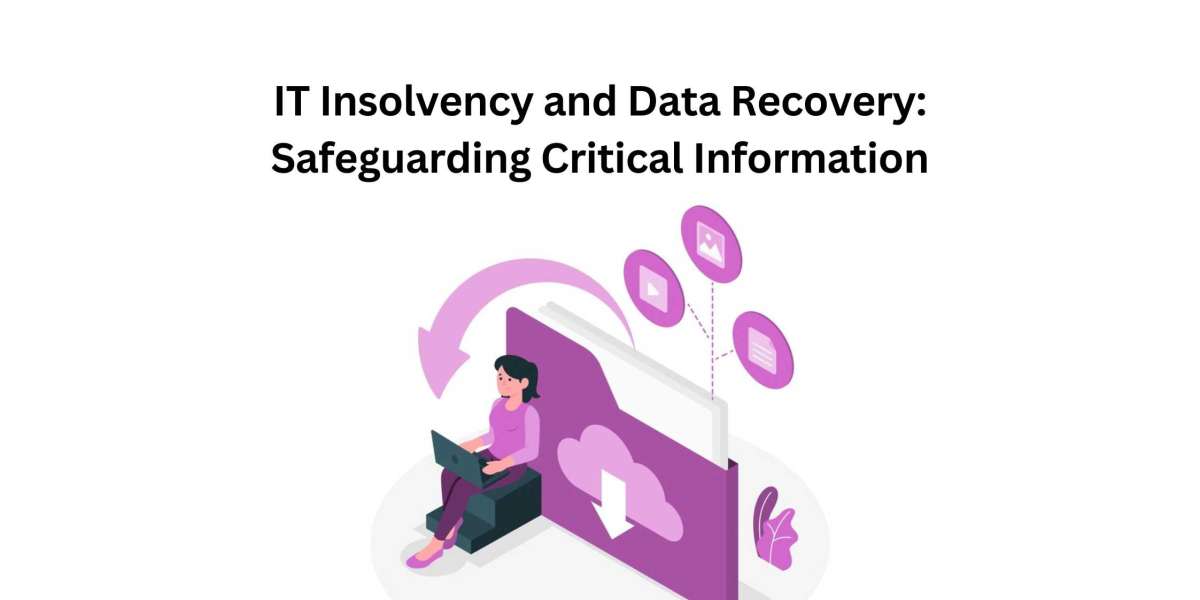Introduction: In today’s digital age, businesses heavily rely on their IT infrastructure and data assets to operate efficiently and securely. However, the risk of IT insolvency poses a significant threat to the availability and integrity of critical information. This blog explores the importance of data recovery in the face of IT insolvency, highlighting key considerations, strategies, and best practices to safeguard and recover critical data assets.
Understanding IT Insolvency and Data Loss Risks: IT insolvency refers to the inability of an organization to continue its IT operations due to financial, operational, or security-related issues. During such challenging times, the risk of data loss and the potential impact on business continuity increases. The following are some key risks associated with data loss during IT insolvency:
System Failures: Insolvent organizations may struggle to maintain and update their IT infrastructure, leading to system failures that can result in data corruption or loss. Without proper maintenance and investment, hardware and software failures can occur, potentially leading to significant data disruptions.
Lack of Backup Strategy: Insolvency can often be accompanied by a lack of resources, including backup infrastructure and processes. Without robust data backup strategies in place, the risk of permanent data loss increases, making recovery more challenging or even impossible.
Security Breaches: Insolvent organizations may become attractive targets for cyberattacks due to limited resources and reduced focus on cybersecurity measures. A successful attack can compromise data integrity and confidentiality, leading to potential data loss or unauthorized access.
Regulatory Compliance: IT insolvency can result in non-compliance with data protection regulations and industry-specific requirements. Failure to meet these obligations can lead to legal consequences, financial penalties, and reputational damage.
Data Recovery Strategies and Best Practices:
Regular Data Backups: Implementing a comprehensive data backup strategy is essential to protect critical information. Regularly back up all important data to external storage devices or cloud-based solutions. Consider leveraging automated backup solutions to ensure consistency and reliability.
Off-Site Data Storage: Storing backups in off-site locations or cloud-based platforms helps safeguard data against physical risks, such as natural disasters, theft, or damage to on-premises infrastructure. Off-site storage ensures data availability even during IT insolvency incidents.
Testing and Validation: Regularly test and validate the effectiveness of data backups and the recovery process. Conducting periodic drills and simulations ensures that backups are viable and can be successfully restored in case of a data loss event.
Data Encryption: Implement strong encryption protocols to protect sensitive data, both in transit and at rest. Encryption adds an extra layer of security, making it harder for unauthorized individuals to access and misuse critical information.
Cybersecurity Measures: Maintain robust cybersecurity measures, even during financial challenges. This includes regularly updating software, implementing firewalls, using antivirus software, and providing cybersecurity training to employees. Vigilance in cybersecurity practices helps prevent data breaches, reducing the risk of data loss during IT insolvency.
Data Recovery Services: Engage professional data recovery services to ensure the highest chances of successful data restoration in the event of data loss. These services employ specialized techniques and tools to recover data from damaged or inaccessible storage devices.
Compliance and Legal Considerations: Stay informed about data protection regulations and industry-specific compliance requirements. Even during IT insolvency, organizations must strive to meet their obligations and take appropriate steps to safeguard and recover critical data in compliance with legal and regulatory frameworks.
Conclusion: IT insolvency poses significant risks to data availability and integrity. Safeguarding critical information through robust data recovery strategies and best practices is crucial for organizations facing financial challenges. Regular backups, off-site storage, testing and validation, encryption, cybersecurity measures, professional data recovery services, and compliance with legal obligations empower businesses to protect and recover critical data assets. By prioritizing data recovery efforts during IT insolvency, organizations can minimize the impact of data loss, maintain business continuity, and safeguard their long-term viability in a rapidly evolving digital landscape.
#AvenDATA #Legacysystems #ITlegacysystems #ITlnsolvency #legacydata








